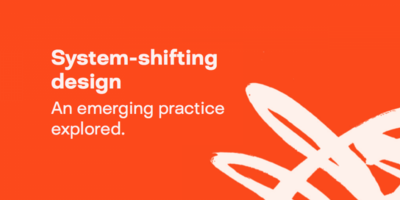Barking and Dagenham Council

Helping a local council save £20,000 to reinvest into other social service improvements.
We knew we needed to do things differently. We couldn’t rely on old-fashioned ways of thinking and working when the world around us was changing so dramatically.
Sue Devitt, Housing Services Team Group Manager, Barking & Dagenham
In 2011, like most local authorities, the London Borough of Barking & Dagenham faced significant pressure to do more with less. Demand from service users was rising but budget for service provisions continued to fall. Council staff knew they had to keep the service users at the heart of what they did, and recognised they would need to rethink their strategy to do so. With that in mind, they approached us to discuss their most pressing issues.
Challenge
The council was eager to challenge traditional methods of service delivery, but was wary of second-guessing end users’ wants and needs. That's when they teamed up with our Design Associate David Townson.
What we did
The first thing David did was to run a series of brainstorming sessions bringing together external design experts with council representatives. The intention was to find the right agency to undertake detailed user research. The chosen agency was Uscreates.
Uscreates took a very visual approach and filmed interviews with local people about their experience with the council. This provided a clear and powerful visualisation for understanding the public's concerns.
The interviewees were then invited to join the council in a workshop exploring solutions to these problems. After that session, the Council chose one problem to focus on - environmental waste - and a solution was prototyped. "In that way, all involved - staff and residents, alike - understood the value and resulting benefits of deploying a user-centred approach," explained Townson.
The programme has definitely changed the way we think. It ensures only viable and effective ideas receive investment
The council introduced new and improved information about how to dispose of items, new signage directing people to appropriate facilities, increased enforcement and a local recycle and re-use pilot scheme enabling neighbours to communicate easily and swap items before having to dispose of them.
Results
A saving of an initial £20,000 was identified, which was reinvested into other service improvements.
This included using a transferable model and tool kit based on the principles used in the initial project, rolled out in other council departments.
Feedback from service users was good, too. A borough-wide survey showed that residents who were involved in the service design process rated the council more highly than the borough average in terms of being kept informed and having their views taken into account.
As well as financial savings, Devitt believes that the council’s participation in the programme created a profound cultural change in the way it operates. “The programme has definitely changed the way we think. By discussing ideas at an early stage with a variety of people and prototyping the projects we think will work we will save time and money. It ensures only viable and effective ideas receive investment.”
By providing the council with a framework and tools to explore new ways to train frontline staff in co-designing services, the programme's benefits will last far beyond its original lifespan, creating a lasting legacy in the borough for both service providers and users.
Design is about process, not a product. It’s about not being constrained by limitations. Learning to think like this will help us deliver the services our users need as efficiently as possible.
Sue Devitt, Housing Services Team Group Manager, Barking & Dagenham
Subscribe to our newsletter
Want to keep up with the latest from the Design Council?

